Effect of the Ti6Al4V Alloy Track Trajectories on Mechanical Properties in Direct Metal Deposition
Abstract
1. Introduction
- (1)
- α-Structure alloys. This group of alloys does not have an increase in brittleness with prolonged exposure to high stresses and temperatures.
- (2)
- α + β-Structure alloys. The β-phase is more ductile, the alloys are more workable and better amenable to pressure processing than α-structure alloys.
- (3)
- β-Structure alloys. This group of alloys has good weldability, good technological ductility, and high strength.
2. Materials and Methods
3. Results
4. Discussion
5. Conclusions
Author Contributions
Funding
Acknowledgments
Conflicts of Interest
References
- Belov, A.F.; Williams, J.C. Titanium and Titanium Alloys. Scientific and Technological Aspects; Springer Science Business Media: New York, NY, USA, 1982. [Google Scholar]
- Vaquila, I.; Vergara, L.I.; Passeggi, M.C.G.; Vidal, R.A. Chemical reactions at surfaces: Titanium oxidation. Surf. Coat. Technol. 1999, 122, 67–71. [Google Scholar] [CrossRef]
- Lopez Gomes, J.E.; Huntz, A.M. Correlation between the oxidation mechanism of titanium under a pure oxygen atmosphere, morphology of the oxide scale, and diffusional phenomena. Oxid. Met. 1980, 14, 249–261. [Google Scholar] [CrossRef]
- Uhlmann, E.; Kersting, R.; Klein, T.B.; Cruz, M.F.; Borille, A.V. Additive manufacturing of titanium alloy for aircraft components. Procedia CIRP 2015, 35, 55–60. [Google Scholar] [CrossRef]
- Singh, P.; Pungotra, H.; Kalsi, N.S. On the characteristics of titanium alloys for the aircraft applications. Mater. Today Proc. 2017, 4, 8975–8982. [Google Scholar] [CrossRef]
- Kianian, B.; Tavassoli, S.; Larsson, T.C. The Role of Additive Manufacturing Technology in Job Creation: An Exploratory Case Study of Suppliers of Additive Manufacturing in Sweden. Procedia CIRP 2015, 26, 93–98. [Google Scholar] [CrossRef]
- Qui, C.; Ravi, G.A.; Dance, C.; Ranson, A.; Dilworth, S.; Attallah, M.M. Fabrication of large Ti–6Al–4V structures by direct laser deposition. J. Alloy. Compd. 2015, 629, 351–361. [Google Scholar]
- Rauch, E.; Unterhofer, M.; Dallasega, P. Industry sector analysis for the application of additive manufacturing in smart and distributed manufacturing systems. Manuf. Lett. 2017, 56, 43–48. [Google Scholar] [CrossRef]
- Bendsoe, M.P.; Sigmund, O. Topology Optimization; Springer: Berlin/Heidelberg, Germany, 2004. [Google Scholar]
- Piili, H.; Happonen, A.; Vaisto, T.; Venkataramanan, V.; Partanen, J.; Salminen, A. Cost Estimation of Laser Additive Manufacturing of Stainless Steel. Phys. Procedia 2015, 78, 388–396. [Google Scholar] [CrossRef]
- Popovich, A.; Sufiiarov, V.S.; Borisov, E.; Polozov, I.A.; Masaylo, D.; Grigoriev, A.V. Anisotropy of mechanical properties of products manufactured using selective laser melting of powdered materials. Russ. J. Non Ferr. Met. 2016, 58, 4–11. [Google Scholar] [CrossRef]
- Kunze, K.; Etter, T.; Grässlin, J.; Shklover, V. Texture, anisotropy in microstructure and mechanical properties of IN738LC alloy processed by selective laser melting (SLM). Mater. Sci. Eng. A 2015, 620, 213–222. [Google Scholar] [CrossRef]
- Baitimerov, R.; Lykov, P.A.; Radionova, L.V.; Safonov, E.V. Parameter optimization for selective laser melting of TiAl6V4 alloy by CO2 laser. IOP Conf. Ser. Mater. Sci. Eng. 2017, 248, 12012. [Google Scholar] [CrossRef]
- Thijs, L.; Kempen, K.; Kruth, J.P.; Van Humbeeck, J. Finestructured aluminium products with by selective laser melting of pre-alloyed AlSi10Mg powder. Acta Mater. 2013, 61, 1809–1819. [Google Scholar] [CrossRef]
- Thijs, L.; Sistiaga, M.L.M.; Wauthle, R.; Xie, Q.; Kruth, J.-P.; Van Humbeeck, J. Strong morphological and crystallographic texture and resulting yield strength anisotropy in selective laser melted tantalum. Acta Mater. 2013, 61, 4657–4668. [Google Scholar] [CrossRef]
- Lykov, P.; Radionova, L.V.; Shults, A. Influence of Powder Layer Thickness on Microstructure of Selective Laser Melted TiAl6V4. Solid State Phenom. 2020, 299, 524–529. [Google Scholar] [CrossRef]
- Mertens, A.; Reginster, S.; Paydas, H.; Contrepois, Q.; Dormal, T.; Lemaire, O.; Lecomte-Beckers, J. Mechanical properties of alloy Ti–6Al–4V and of stainless steel 316L processed by selective laser melting: Influence of out-of-equilibrium microstructures. Powder Met. 2014, 57, 184–189. [Google Scholar] [CrossRef]
- Carter, L.; Martin, C.; Withers, P.J.; Attallah, M.M. The influence of the laser scan strategy on grain structure and cracking behaviour in SLM powder-bed fabricated nickel superalloy. J. Alloy. Compd. 2014, 615, 338–347. [Google Scholar] [CrossRef]
- Baitimerov, R.M.; Lykov, P.A.; Radionova, L.V.; Akhmedianov, A.M.; Samoilov, S.P. An investigation of high temperature tensile properties of selective laser melted TI-6AL-4V. In Proceedings of the International Conference on Progress in Additive Manufacturing, Nanyang, Singapore, 14–17 May 2018; pp. 439–444. [Google Scholar]
- Song, B.; Dong, S.; Coddet, P.; Liao, H.; Coddet, C. Fabrication of NiCr alloy parts by selective laser melting: Columnar microstructure and anisotropic mechanical behavior. Mater. Des. 2014, 53, 1–7. [Google Scholar] [CrossRef]
- Vrancken, B.; Thijs, L.; Kruth, J.-P.; Van Humbeeck, J. Microstructure and mechanical properties of a novel β titanium metallic composite by selective laser melting. Acta Mater. 2014, 68, 150–158. [Google Scholar] [CrossRef]
- Dadbakhsh, S.; Vrancken, B.; Kruth, J.-P.; Luyten, J.; Van Humbeeck, J. Texture and anisotropy in selective laser melting of NiTi alloy. Mater. Sci. Eng. A 2016, 650, 225–232. [Google Scholar] [CrossRef]
- Baitimerov, R.; Lykov, P.; Radionova, L. Influence of Heat Treatment on Microstructure and Mechanical Properties of Selective Laser Melted TiAl6V4 Alloy. Solid State Phenom. 2018, 284, 615–620. [Google Scholar] [CrossRef]
- Popovich, A.A.; Sufiiarov, V.S.; Polozov, I.A.; Borisov, E.V. Microstructure and Mechanical Properties of Inconel 718 Produced by SLM and Subsequent Heat Treatment. Key Eng. Mater. 2015, 651, 665–670. [Google Scholar] [CrossRef]
- Scvortsova, S.V.; German, M.A.; Grushin, I.A. The structural and texture analysis of titanium alloy Ti-6Al-4V samples obtained by direct metal deposition. IOP Conf. Series: Mater. Sci. Eng. 2020, 709. [Google Scholar] [CrossRef]
- Samodurova, M.N.; Logachev, I.; Shaburova, N.; Samoilova, O.; Radionova, L.; Pashkeev, K.; Myasoedov, V.; Trofimov, E. A Study of the Structural Characteristics of Titanium Alloy Products Manufactured Using Additive Technologies by Combining the Selective Laser Melting and Direct Metal Deposition Methods. Materials 2019, 12, 3269. [Google Scholar] [CrossRef] [PubMed]
- Bykovskiy, D.P.; Petrovskiy, V.N.; Sergeev, K.L.; Osintsev, A.V.; Dzhumaev, P.S.; Polskiy, V.I. Direct metal laser deposition of titanium powder Ti-6Al-4V. J. Phys. Conf. Ser. 2017, 941, 012031. [Google Scholar] [CrossRef]
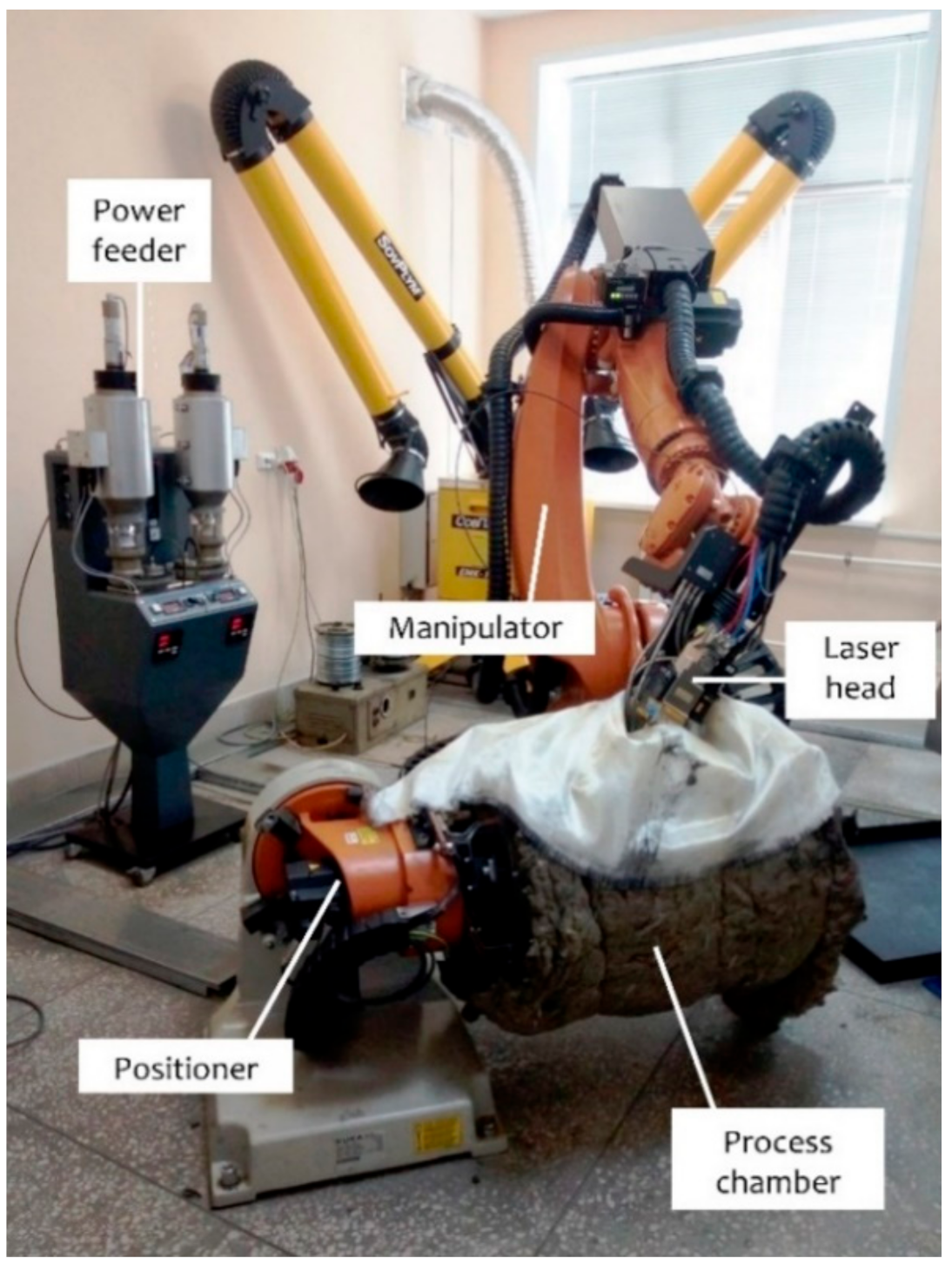

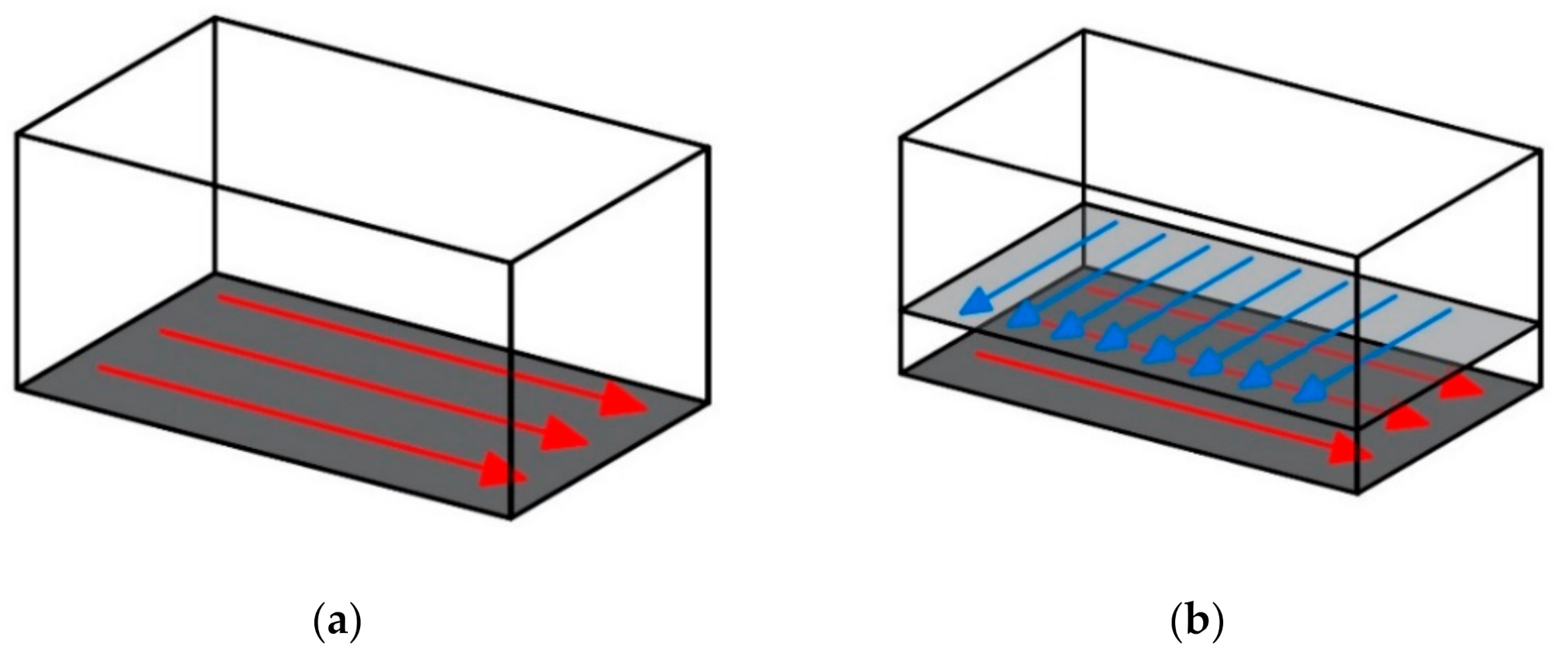
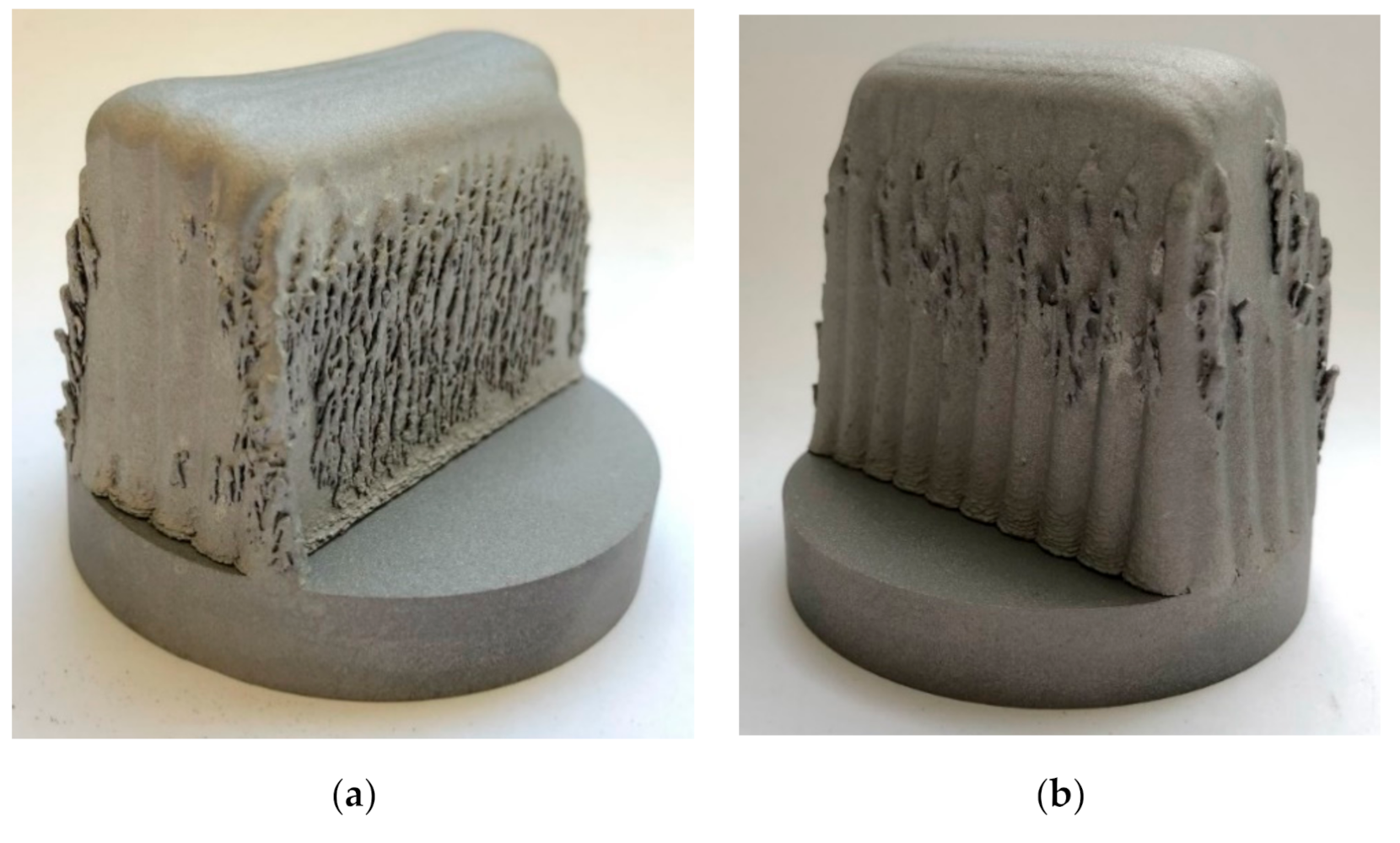
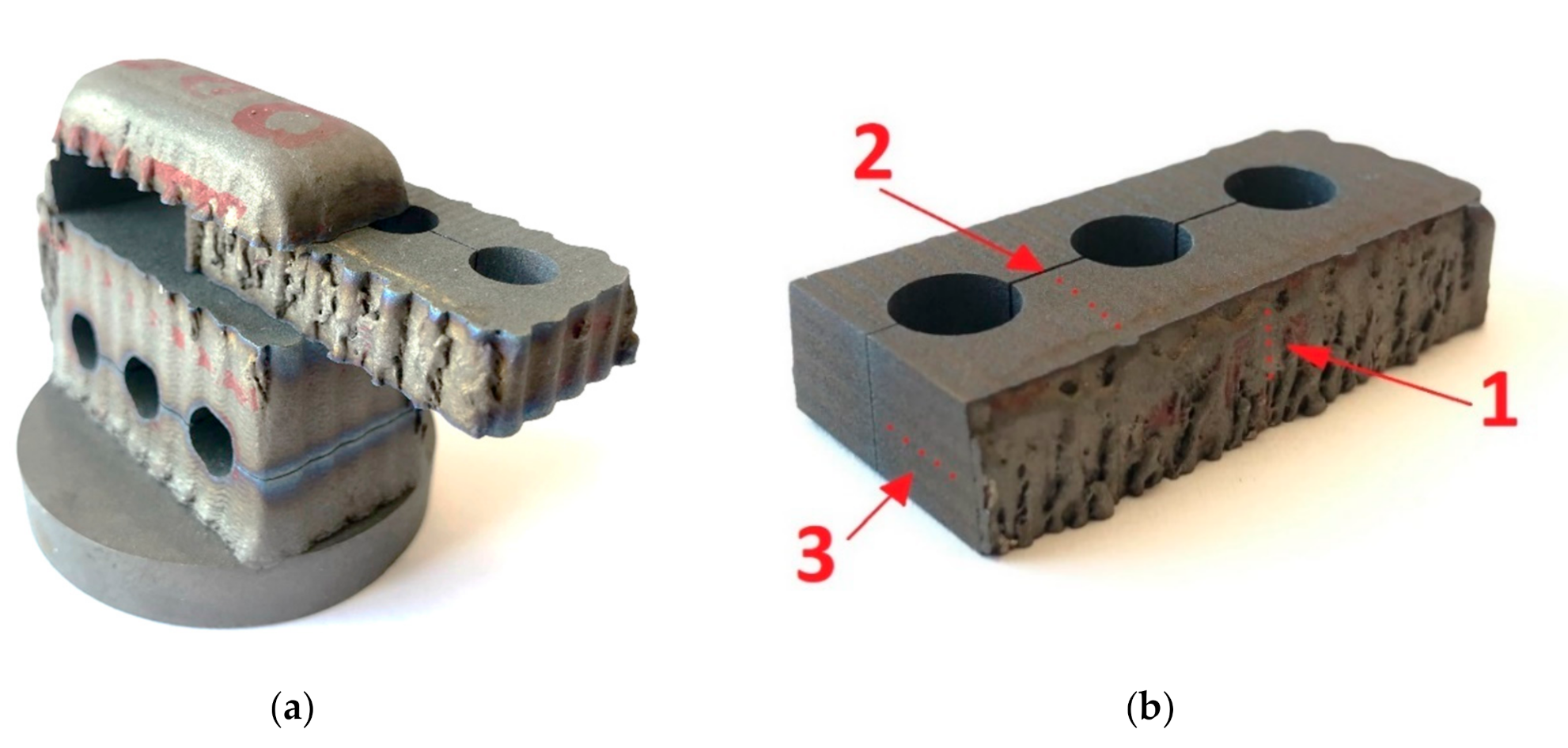
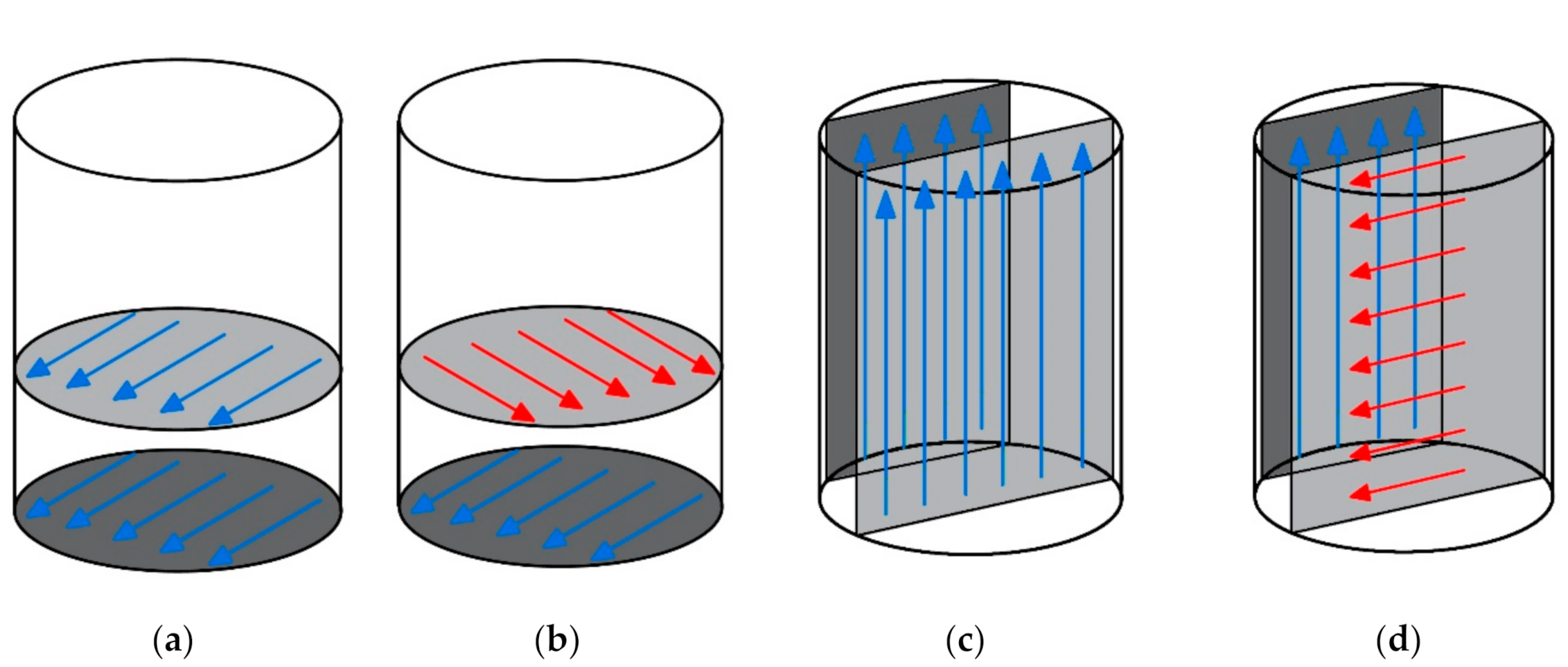
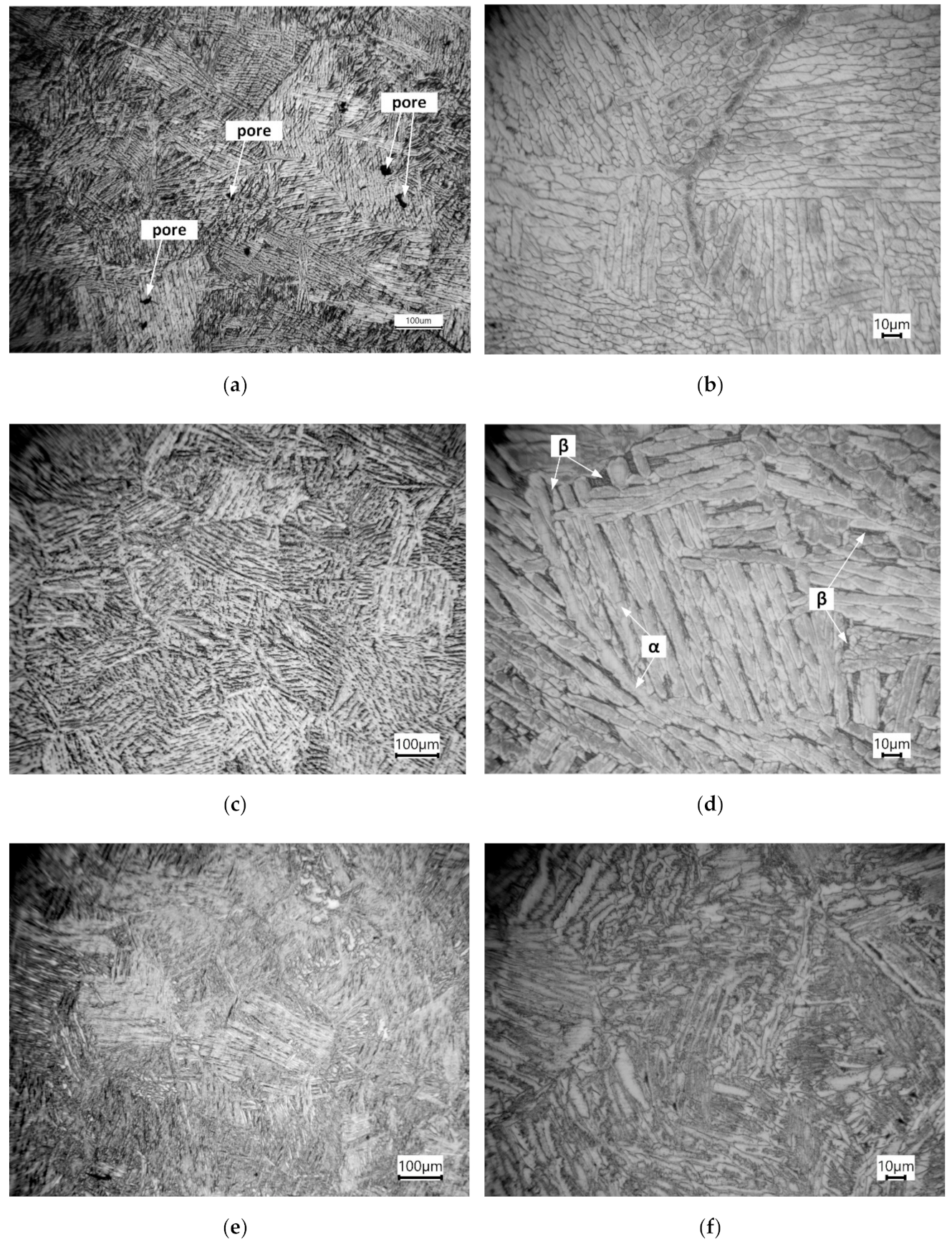


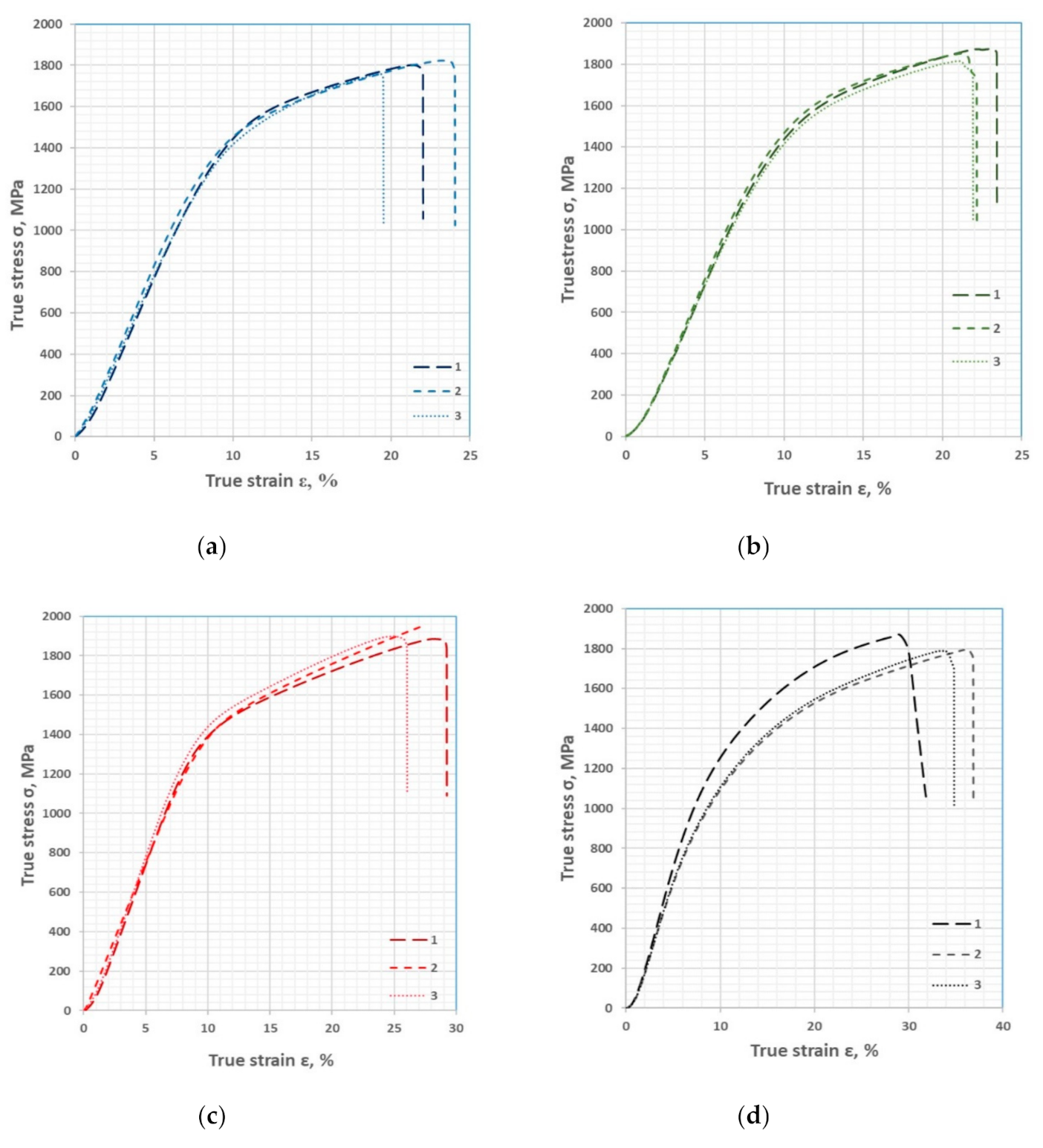
| Mass% | Al | Si | Ti | V | Fe | Amount |
|---|---|---|---|---|---|---|
| Sample no. 1, the «parallel» technique | 5.91 | 0.13 | 89.09 | 4.66 | 0.22 | 100.00 |
| 5.98 | 0.09 | 89.15 | 4.58 | 0.20 | 100.00 | |
| Sample no. 2, the «perpendicular» technique | 5.86 | 0.11 | 89.25 | 4.64 | 0.15 | 100.00 |
| 5.92 | 0.12 | 89.48 | 4.29 | 0.18 | 100.00 |
| Sample Type | Measurement Direction | Hardness Value, HV | |||||
|---|---|---|---|---|---|---|---|
| 1 | 2 | 3 | 4 | 5 | Mean Value | ||
| Sample no. 1, the «parallel» technique | 1 | 386 | 442 | 401 | 401 | 413 | 409 |
| 2 | 449 | 475 | 486 | 494 | 460 | 472 | |
| 3 | 490 | 533 | 510 | 502 | 486 | 504 | |
| Sample no. 2, the «perpendicular» technique | 1 | 435 | 467 | 428 | 449 | 446 | 445 |
| 2 | 498 | 478 | 467 | 478 | 460 | 476 | |
| 3 | 482 | 536 | 510 | 519 | 510 | 511 | |
| Layout of Tracks in the Sample | Compressive Strength Rs, MPa | Young’s Modulus, MPa | Compression Strain, % |
|---|---|---|---|
| «parallel» | 1794 | 17642 | 21,3 |
| «perpendicular» | 1847 | 17678 | 21,8 |
| «vertical» | 1910 | 16998 | 26,8 |
| «mixed» | 1817 | 15697 | 33,0 |
Publisher’s Note: MDPI stays neutral with regard to jurisdictional claims in published maps and institutional affiliations. |
© 2020 by the authors. Licensee MDPI, Basel, Switzerland. This article is an open access article distributed under the terms and conditions of the Creative Commons Attribution (CC BY) license (http://creativecommons.org/licenses/by/4.0/).
Share and Cite
Erdakov, I.; Glebov, L.; Pashkeev, K.; Bykov, V.; Bryk, A.; Lezin, V.; Radionova, L. Effect of the Ti6Al4V Alloy Track Trajectories on Mechanical Properties in Direct Metal Deposition. Machines 2020, 8, 79. https://doi.org/10.3390/machines8040079
Erdakov I, Glebov L, Pashkeev K, Bykov V, Bryk A, Lezin V, Radionova L. Effect of the Ti6Al4V Alloy Track Trajectories on Mechanical Properties in Direct Metal Deposition. Machines. 2020; 8(4):79. https://doi.org/10.3390/machines8040079
Chicago/Turabian StyleErdakov, Ivan, Lev Glebov, Kirill Pashkeev, Vitaly Bykov, Anastasia Bryk, Vyacheslav Lezin, and Liudmila Radionova. 2020. "Effect of the Ti6Al4V Alloy Track Trajectories on Mechanical Properties in Direct Metal Deposition" Machines 8, no. 4: 79. https://doi.org/10.3390/machines8040079
APA StyleErdakov, I., Glebov, L., Pashkeev, K., Bykov, V., Bryk, A., Lezin, V., & Radionova, L. (2020). Effect of the Ti6Al4V Alloy Track Trajectories on Mechanical Properties in Direct Metal Deposition. Machines, 8(4), 79. https://doi.org/10.3390/machines8040079






